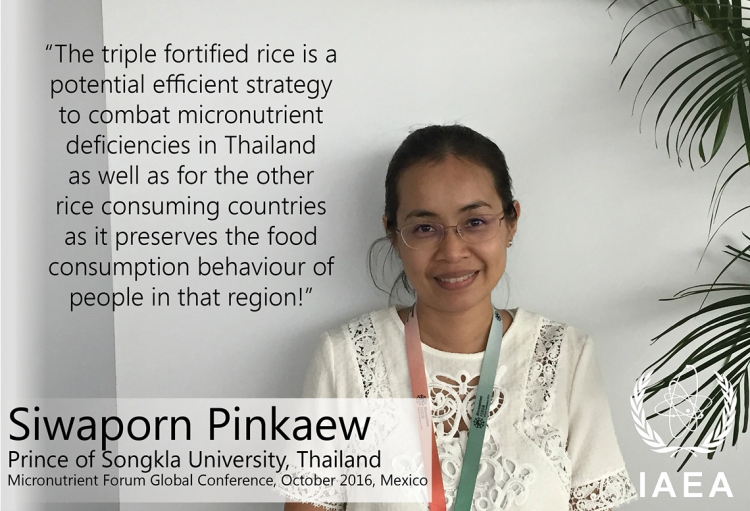Last week the Micronutrient Forum Global Conference took place in Cancun, Mexico, attracting about 1000 researchers and programme planners from around the world. A symposium entitled "Stable isotope techniques help optimal formulation and impact assessment of food fortification programmes" was organized by the International Atomic Energy Agency (IAEA) through its Nutritional and Health-Related Environmental Studies Section (NAHRES). The stable isotope techniques the IAEA is working with are important tools for evaluating food fortification initiatives.
Deficiencies of vitamins and minerals, the so-called 'hidden hunger', are estimated to affect as many as two billion people globally. These deficiencies account for approximately seven per cent of the global disease burden. One strategy to combat them is food fortification.
Food fortification can be achieved by adding micronutrients to staple food that is regularly eaten by the population, so that the micronutrients are consumed frequently in amounts chosen to prevent deficiencies, while avoiding the likelihood that excessive amounts, which are also unhealthy, will be consumed.
The IAEA promotes the use of stable isotope techniques for assessing micronutrient bioavailability and status. Micronutrients play an important role in nutrition: they ensure healthy growth and development; they are critical for good vision, bone strength and oxygen-carrying in red blood cells; and they increase resistance to infections. But micronutrients are often limited in human diets, largely due to high intakes of energy-dense and nutrient-poor staple food. In low income countries, availability and access to a wide range of nutritious food is often a problem.
In the symposium, participants presented results of their research, of which some examples are given below. Outcomes from Haiti demonstrated the differences in the bioavailability of iron fortificants from wheat flour and presented more cost-effective options to maximize the amount of absorbed iron from wheat flour. The results will provide the basis for defining level and type of iron fortificant(s) to add to wheat flour in the national fortification programme.
Two examples from Thailand and Mexico demonstrated the value of assessing body vitamin A stores using the retinol isotope dilution technique. In Southern Thailand, rice was fortified with iron, zinc, and vitamin A. The retinol isotope dilution technique revealed that school children consuming the fortified rice for two months had significantly increased body vitamin A stores, which would not have been detected with other methods.
This year's focus of the Micronutrient Forum Global Conference was "Positioning Women's Nutrition at the Centre of Sustainable Development" emphasizing the role of women as both a focus of nutrition interventions and key partners in the delivery of programmes.









